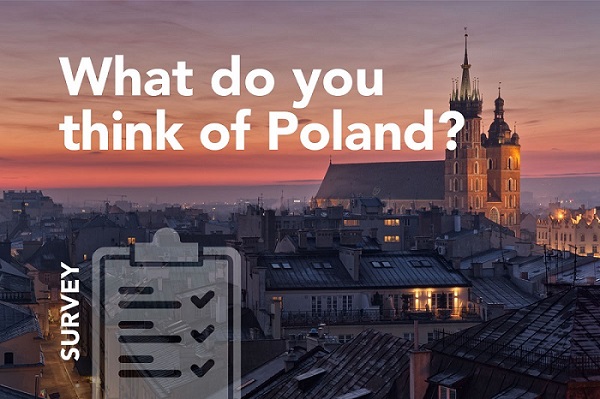Churches of Peace in Jawor and Świdnica
UNESCO Conference on the List of World Heritage took place in Helsinki in December 2001. During this meeting Poland, supported actively by Germany, suggested to add two Silesian Churches of Peace to the UNESCO World Cultural Heritage List. This wish was fulfilled and as a result the List was enlarged by the two biggest European sacral buildings constructed by the use of timber framing.
These churches, both the history of their construction and the perfect assembly of their mortise and tenon joints are just as amazing as their polychrome interior finishing. It is particularly advisable to visit the interiors, during the famous organ concerts. It is also worth mentioning that in both cities the churches are still owned by the sparse protestant communities.
The religious and political conflicts of the 17th century that took place in the German states ended in Silesia with the so called Peace of Westphalia in 1648. Silesian Protestants, supported by Sweden, negotiated the right to establish three new churches. The churches earlier taken away from the Protestants were never returned. The Austrian emperor, Ferdinand, allowed to build churches in Glogau (Głogów), Schweidnitz (Świdnica) and Jauer (Jawor). Two of the three churches are still standing today, only the Protestant church in Glogow had burned down in 1758.
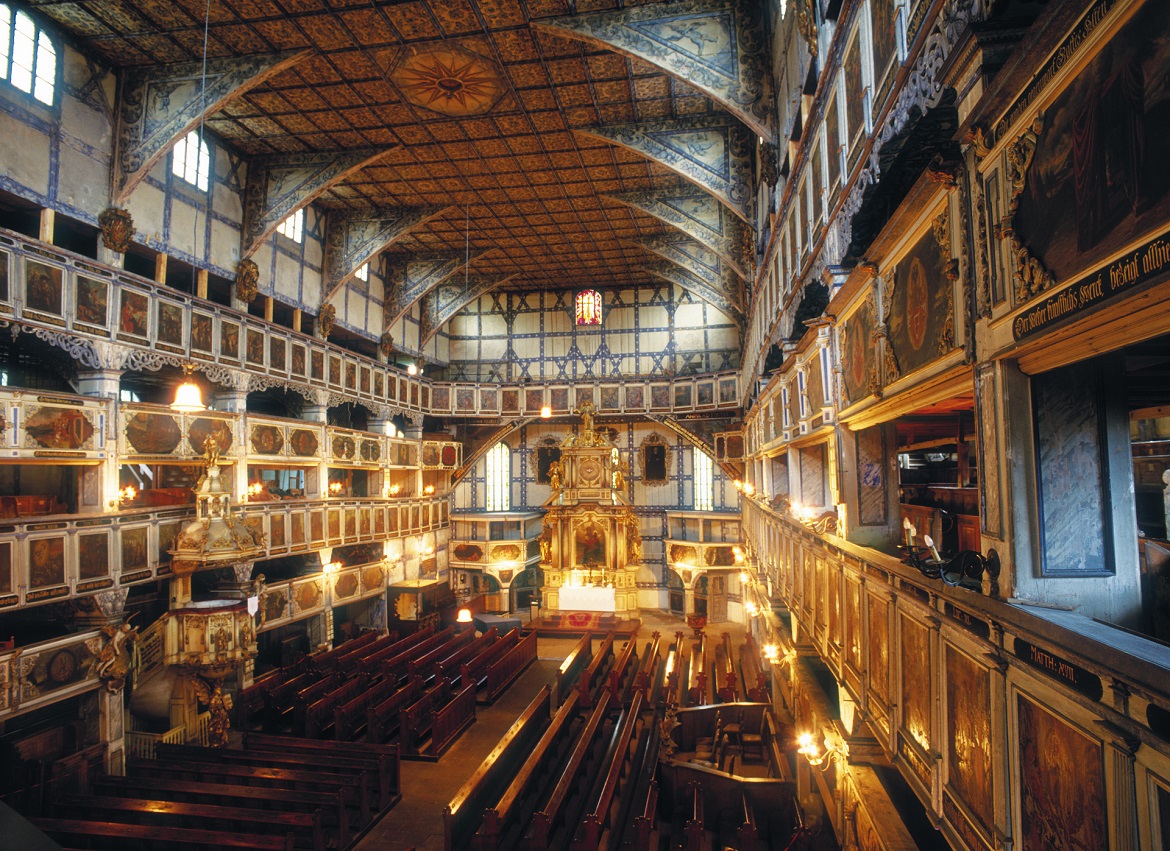
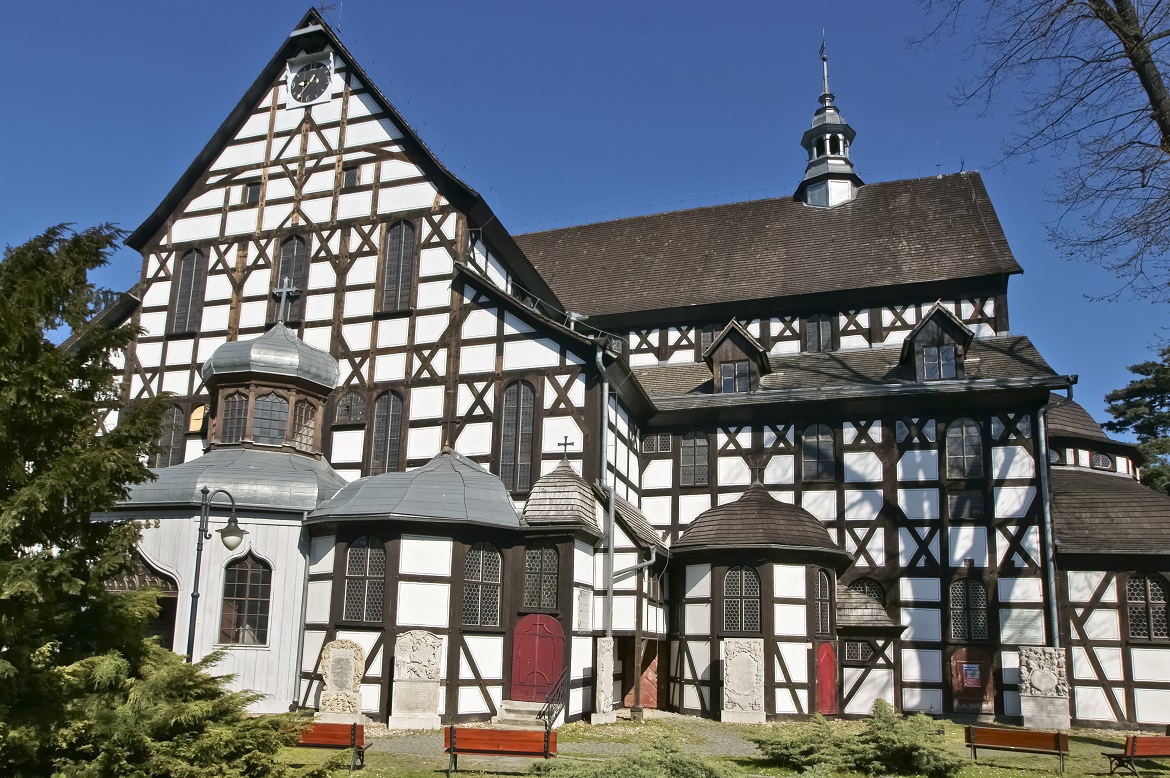
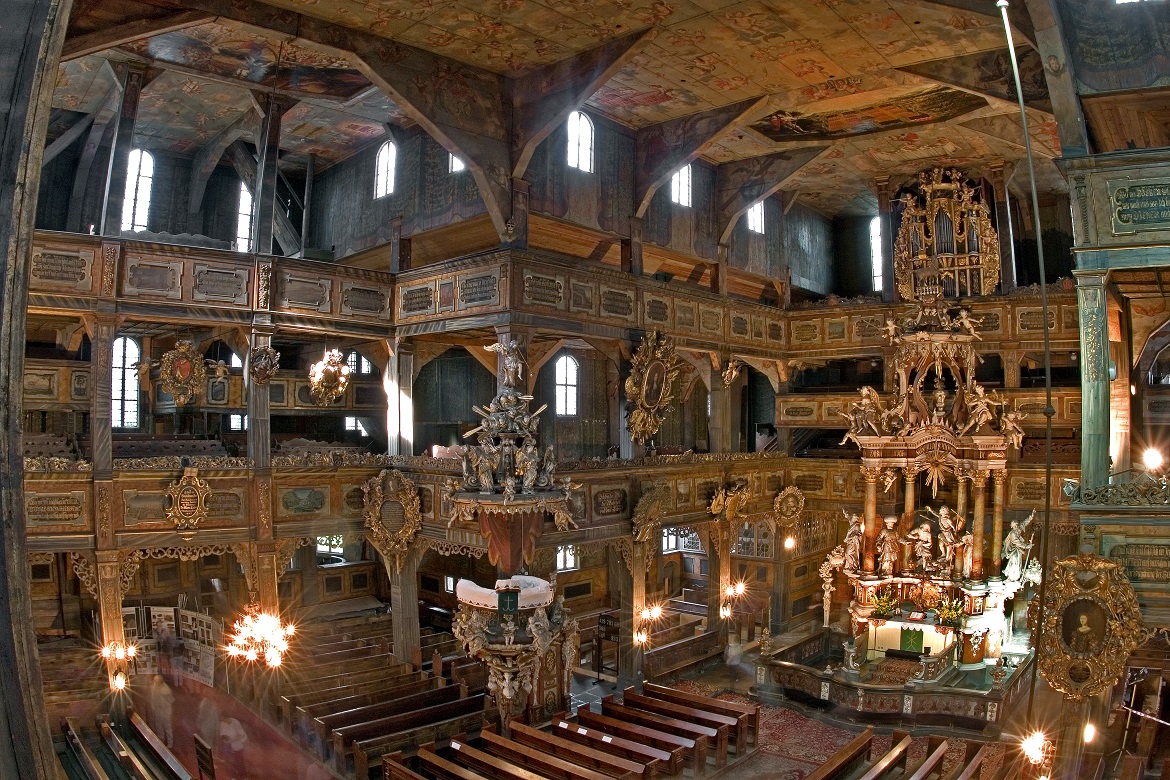
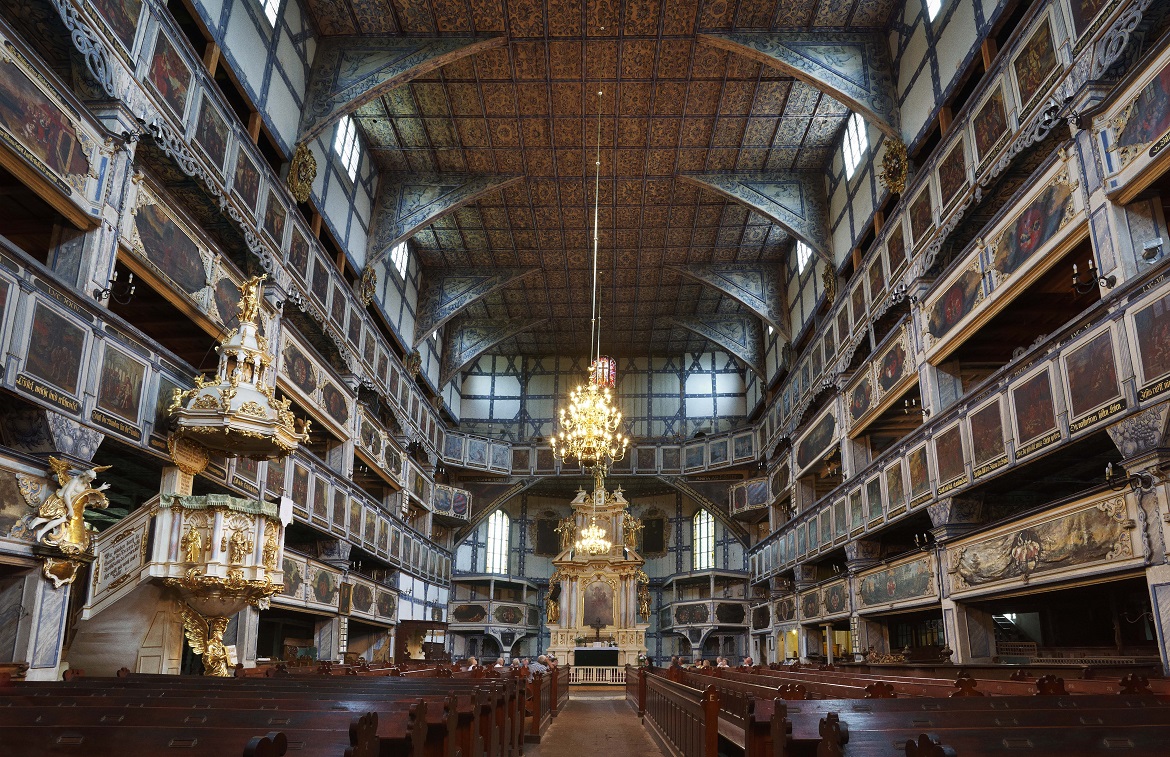
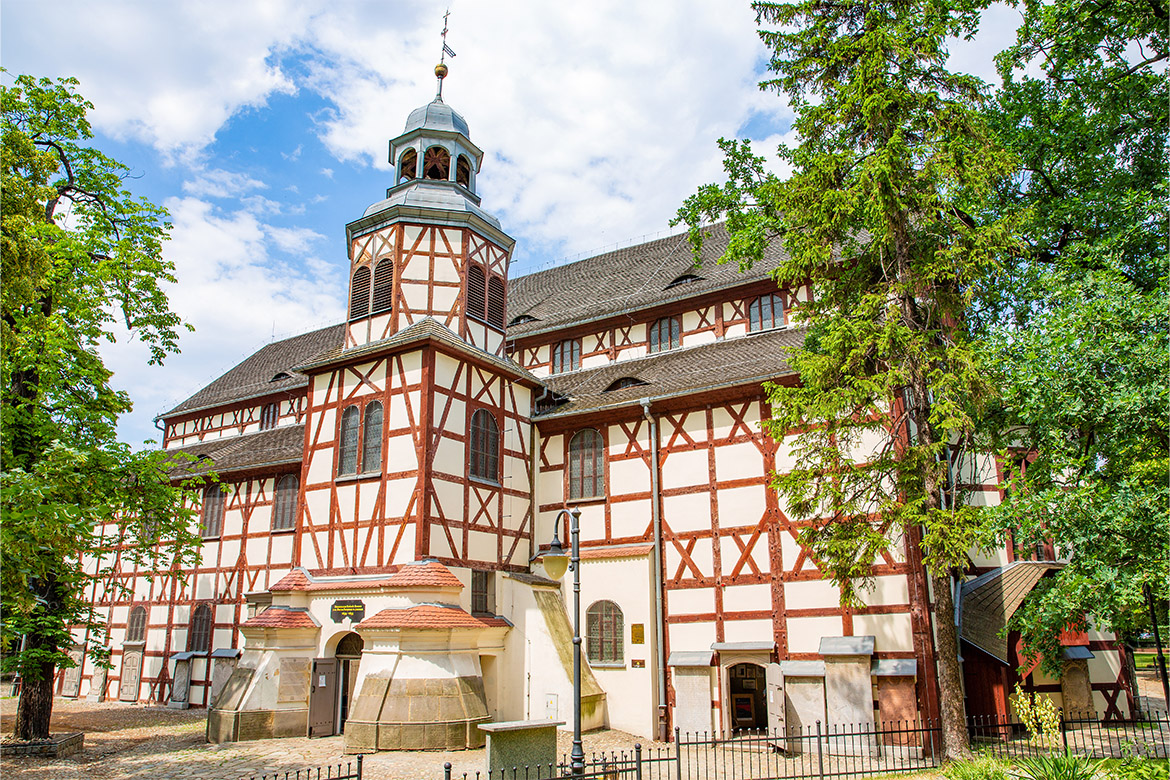
The clerks formulated a set of conditions for architects to stop the Protestants from constructing representative, and by no means defensive, buildings. They were allowed to use only undurable materials such as wood and clay, the building had to be placed outside the city, and could not have a tower nor use bells. The costs of the structures were to be covered by the impoverished evangelic communities. It was not until 1707 when by virtue of the Altranstadt convention the belfry was allowed. Furthermore it is worth mentioning that three churches is very little in comparison to the overall number of Protestants in Silesia at the time.
The Protestants tried to deal with this difficult situation in the best possible way. An architect from Wroclaw, Albrecht von Saebisch, built one of the largest wooden churches in the world. The churches built using the timber framing technology in the years 1654 – 1655 (in Jawor) and 1656 – 1658 (in Świdnica) have a surface of 1180 m² and 1.090 m² offering seating for 5.500 and 7.500 people respectively. The faithful can pray on several levels. The interior, simple in its shape, was decorated with paintings around 10 years after the church had been built. The baroque plant ornament, the depictions of Silesian coats of arms and pictures from the life of the nobles as well as biblical scenes were painted in Świdnica by Christoph Kalicki and Christian Süßenbach, and in Jawor by Georg Flegel.
Most of the works of art that decorate both churches originate from Silesian workshops. Famous artists who worked for the Protestant communities are Christoph Klose from Brzeg, Pankratius Werner from Jelenia Góra as well as Matthäus Knote and Josef Hoferichter from Legnica. Gottfried August Hoffman, the author of the pulpit and the altar had been creating works for the community of Świdnica for decades.
Both churches can be visited with or without a professional guide. As an alternative we recommend commentary played from a tape at request. A small entrance fee is required.
The organs of the church in Świdnica are particularly famous for their sound quality. Since the year 2000 an annual concert of music composed by Jan Sebastian Bach is organized there, the so called „International Bach Festival“.


